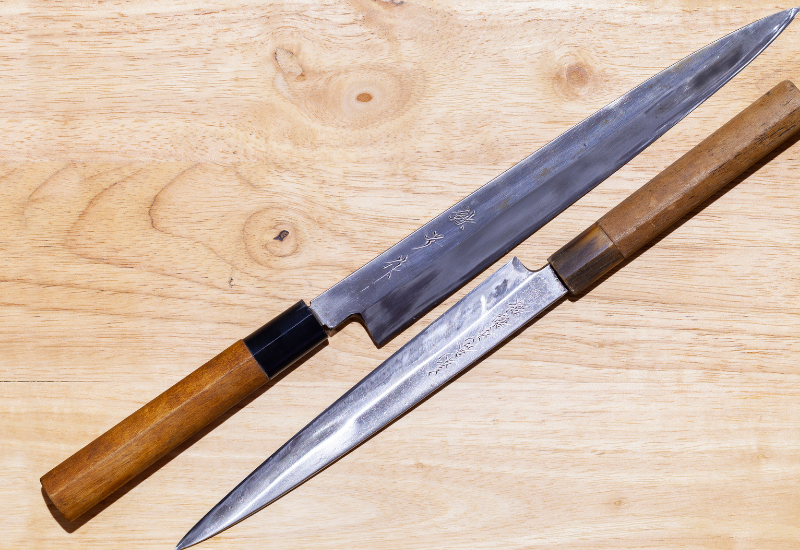

Yanagiba knives hold a special place in the world of Japanese cutlery as they are specifically designed for the delicate art of slicing raw fish for sashimi and sushi. Choosing the right Yanagiba knife can greatly enhance your culinary skills, but it can be challenging with so many options available. This guide will help you understand the key factors to consider when selecting a Yanagiba knife, including blade length, materials, and craftsmanship.
Blade Length:
Yanagiba knives come in various lengths, ranging from 210mm (8.3 inches) to 360mm (14.2 inches) or even longer. The optimal length for your needs depends on your skill level, hand size, and the size of the ingredients you typically work with. As a general rule, a 270mm (10.6 inches) blade is versatile and suitable for most users, but professionals may opt for longer blades for increased precision and smoother cuts.
Blade Material:
Similar to other Japanese knives, Yanagiba knives are typically made from either carbon steel or stainless steel. Carbon steel offers a sharper edge and easier sharpening, but it is more prone to rust and requires extra care. Stainless steel, on the other hand, is more resistant to rust and low maintenance but may not hold its edge as long. Choose the blade material based on your preferences and willingness to maintain the knife.
Single or Double Bevel:
Yanagiba knives are traditionally single bevel, meaning they are sharpened on one side only, which results in an extremely sharp edge for precise cuts. However, single bevel knives can be more challenging to use for those unfamiliar with the technique. Double bevel Yanagiba knives, which are sharpened on both sides, are also available and might be more suitable for beginners.
Craftsmanship and Quality:
To ensure the longevity and performance of your Yanagiba knife, pay attention to craftsmanship and quality. Look for knives made by reputable manufacturers or artisans, such as Shun, Miyabi, and Masamoto. Hand-forged knives often have higher quality, but they can be more expensive. Inspect the knife’s fit and finish, as well as the sharpness and polish of the blade.
Handle Type:
Yanagiba knives typically come with a traditional Japanese “wa” handle, made from wood and water buffalo horn. These handles are lightweight and designed for precise cutting techniques. Ensure that the handle is comfortable in your hand and well-balanced with the blade.
Choosing the perfect Yanagiba knife involves understanding the importance of blade length, materials, craftsmanship, and other key factors. By carefully considering these aspects, you can find a Yanagiba knife that not only enhances your culinary skills but also serves you well for many years to come.